MOBILE
Neo-Bank
Vodafone Neobank app
Bank for the largest telecom provider.

About the project
Staying open to new challenges and opportunities seems hard for big international companies. They already have a working business model and don’t need to create new approaches to keep going. But this is not the case for Vodafone, which is always eager to new. Being the biggest telecommunication company in the world didn’t stop them from the urge to conquer a totally new market — banking. They came to us with a bare wish to build up a NEO-bank app. Our development expertise allowed us to assess the market quickly, discover insights and find the best-matching app idea according to the given requirements and limitations.
Customer
The customer is a leading telecommunications company keeping society connected and building a digital future for everyone.
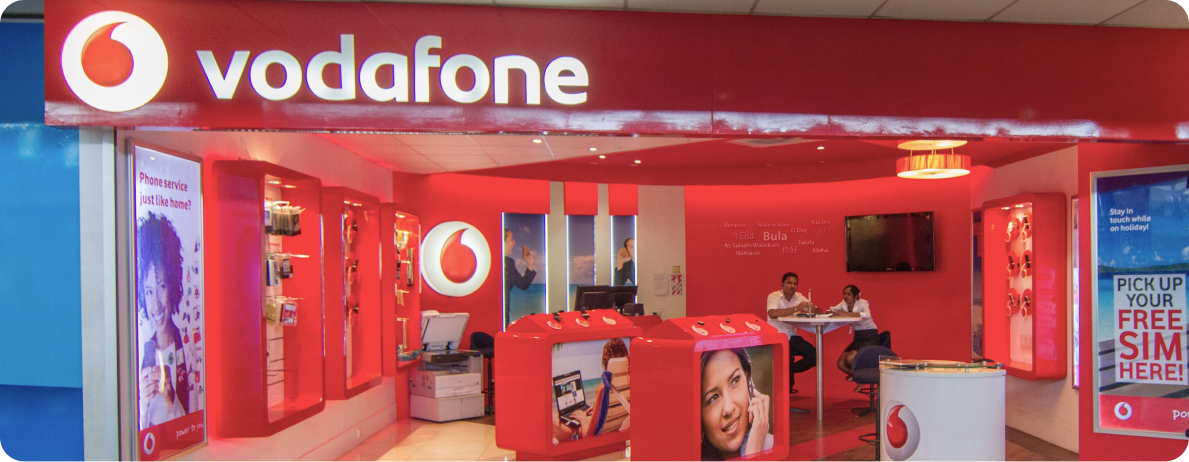
Vodafone BY THE NUMBERS
Vodafone is a leading Ukrainian mobile operator. It provides a wide range of services including 4G and 4G data transmission, messaging, mobile voice communication, fixed internet, and mobile TV.
Our challenge
As clients assessed the fintech industry as quite new for them, they wanted to hear more suggestions from us on where they have to focus. So our task is logically divided into two parts:
- Market and customer investigations—we’re doing everything to find strong needs and pains that can be covered by a service that can be owned by client;
- Prototyping the service based on the app according to the data we collect on the first step and testing its viability. Presenting the app prototype with all inner and outer processes explanations to the client.

Problems we faced with
Because of the pandemics, we had to provide 100% of our services online with no discount for quality.
No long-term product value of the mobile app
Client wanted to avoid any crediting services in the service pack of an app
Limited time for the unlimited creativity process of business ideas design, hypothesis testing, and prototyping

Solutions we propose
Our client’s digital solution is ZEMPCENTER Retail, a Point of Sales SaaS solution providing an end-to-end business application.

Conduct Market research:
- competitors research
- user research
business model - research
trend research
Customer development:
- hypothesis creation
- user profiling & segmentation
- user service & in-depth interview
Business modeling
- BMC design
- cost structure calculating
- revenue structure forecasting
- BEP & ROI modeling
- customer journey mapping
- service blueprint desing
- customer funnels design
- user jobs mapping
- pains & gains discovery
- pain relievers & gains creators
- proposed solutions
- VP testing with the client
- high fidelity prototype user testing via Maze
The process of creating
Vodafone
To succeed, you need a plan. To succeed in enterprise mobile app development, you need the exact plan of the development process described below. As simple as that.
- > Trend Canvas
- > Key business ideas
- > Customer journey map
- > Value proposition canvas
- > Backlog creating
- > Job & user stories creating
- > BPMN modelling
- > Business tasks describing
- > PRD completing
- > Figma hi-fi prototype creating
- > User flows mapping
- > Clickable prototype creating
- > Clickable prototype realtime testing
- > Iteration changes
- > Software architecture diagram
- > Data flow diagram
- > API methods specs.
- > 3d-party services integration model
- > Full technical specification creating
Discovery process
DESIGN SPRINT and solution
During this stage, we outline our goals, test hypotheses, sketch a prototype and after creating the prototype, we test it. Then we deliver the final solution to client and move on.


Initial workshop with the client
The next step is deep work with the client, which gives us answers to the most important question. During this workshop, we discovered problems and requests that clients had and found the best suitable solutions for them.

Value Proposition Canvas
helped ensure that a product was positioned around what the customer values and needs
Business Model Canvas
created visual representation of a business model, highlighting all key strategic factors, customers, revenue streams and more.
Customer journey map
mapped user journeys, measured touch points, and examined all of the most challenging areas.
interview
For a deep understanding of the unresolved problems market has, we need to conduct qualitative research. In-depth interviews are just perfect for that, as they receive detailed answers from respondents instead of simply filling out a standard questionnaire. Also, they are one of the most inexpensive and simplest studies.
These interviews do not confirm or disprove hypotheses. They just describe the user experience. And through this, we can have a better understanding of problems that are occurring, their context, and how users manage these problems.
Recruiting people for interviews is another job that is needed to be done. Not every user fits into respondent requirements, that is why we need to form a list of characteristics describing the perfect user, whose experience will be most relevant to us. Based on these data, a screening questionnaire is formed which filters questions for the selection of respondents.
- Age (20-55 years old).
- Income (average/above average/ high).
- Over the past six months, the respondent has used loyalty services.
-
Who our user is, what his goal and motivation are.
-
What his current experience is – what steps he goes through, what actions he takes on them, what problems he has, what pleasant moments arise along the way.

Respondents
Duration of each
questions
interview
analysis
After the interview is done, we translate respondents’ answers into text form. And that’s where real work begins, and where insights are born.
We analyze all answers and divide them into colors. Yellow stickers describe what actions the person performed, red stickers — what problems he had at that moment, and green stickers — what pleasant moment he had while moving toward the goal.
Also, we point out the context that facilitated these actions. Then we define the Big Job that all actions were performed for. And, finally, we group the stickers by topic. As a result, we get a certain number of groups of stickers and then give them certain names. This process is called theming.

quantitative interview results
Eventually, we can see a chart with answers to the most important questions regarding the market. They will help us identify and satisfy particular customers’ needs. And make customers love our product through the joy and convenience that the user experience will deliver.
What is most important for you in the bank?

key metricks
A quantitive survey involved 2500 respondents in the focus group. It allowed us to highlight some of the insights.
Based on the data obtained from in-depth interviews, we draw up a general user persona that reflects the customer segment we have intensified as a key.

Age: 20
Status: Single
Occupation: Student
Lacation: Kyiv
Andrew is a BBA student. Andrew does not understand what are the rates and which card is profitable. Also, Andriy’s parents help him by sending 2000 uah a month for a living. He is ready to invite +1 member of his family to the bank he uses with motivation to send him money quickly and on time
- Ready to open loans and ready to pay it, working additionally or counting on the next payment from parents
- Transfers scholarship money to his personal card in his bank
- Quick and accessible support that communicates in a language I understand is important to me
- He is too lazy to go to the bank to reissue the card, but he would do it online
- He does not understand why he should use several cards if he already has one
- Image is an important factor when choosing a bank
- Joint Purchases
- Special cashback for students
- Use the card and get bonus for mobile communication
- Online card reneval
- Friends
- Online and social media
- Online advertisment
- Mobile apps
- Social network
- Android
Competitor research
No one is isolated from the market, so in developing a new product you have to consider competitors, their strengths, and weaknesses. That is exactly what we were busy with at the stage of competitors’ research. It is an efficient instrument for brand positioning, market research, and discovering its unresolved problems.

Customer Journey
We think of a customer’s relationship with a company as a story. Like all other stories, it has its beginning, plot twists, challenges, and should have a happy end. For a better understanding of the user experience, we mapped user journeys, measured touch points, and examined all of the most challenging areas.





Features backlog
After analyzing what’s under the hood in competitors’ products, we’re able to create our own features backlog to get a helicopter view of all things that must be done in development.

Business model canvas
Now comes the time to put it all together. For doing that we are using a business model canvas. It is a great tool that visualizes everything: from the value propositioning of the product and its structure, to its customers and financial parts of the business. Using this diagram one can document the entire shape of the business model conveniently and comprehensively.
KEY PARTNERS
KEY ACTIVITIES
KEY RESOURCES
VALUE PROPOSITION
CUSTOMER RELATIONSHIPS
CHANNELS
CUSTOMER SEGMENTS
COST STRUCTURE
REVENUE STREAMS
high-fidelity
wireframes
High-fidelity wireframes are often built in the advance stages of the design process to communicate design decisions to the development team prior to coding the final product.
low fidelity
prototype
It’s design time! We prototype the main screens and their possible variants of them to select the most fitting vector for our design system. Few options of design are going through our targeted audience reviews to check if it’s clear and understandable for them.









design process
colors
Primary Colors
Primary Colors
Buttons Cases
Elements

Final design
Finally, we are happy to share with you finalized design screens!
The effortless-looking and friendly design are what we resulted with after all the previous stages of hard work and deep research. Looks neat, doesn’t it?
home screen & card settinng
Here users can look through their balance, accounts, and available financial products such as accounts, debit, or credit cards and easily control them with one click.
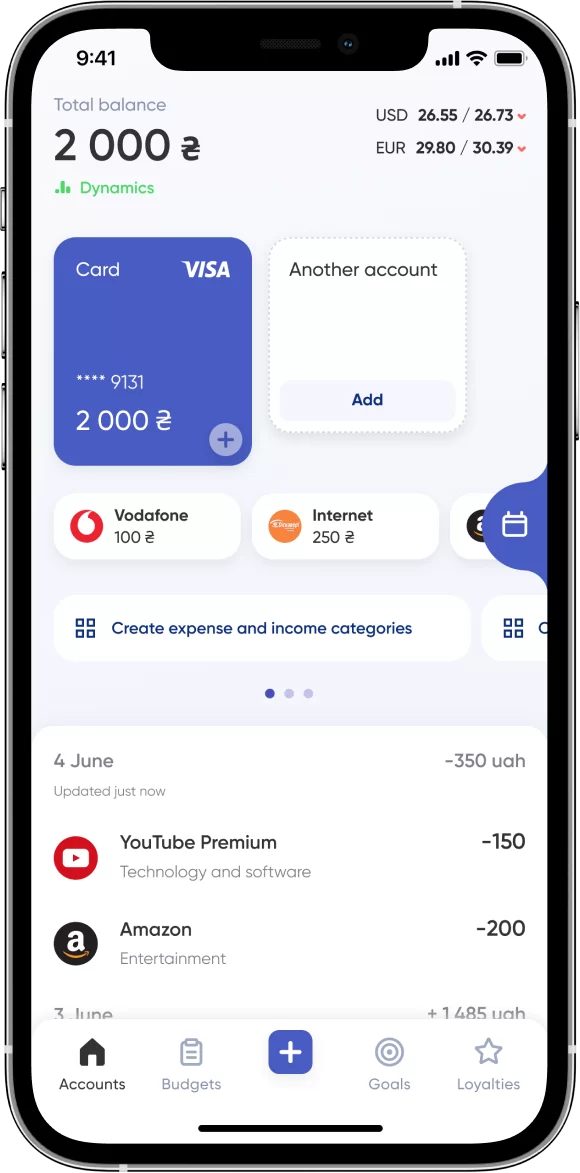
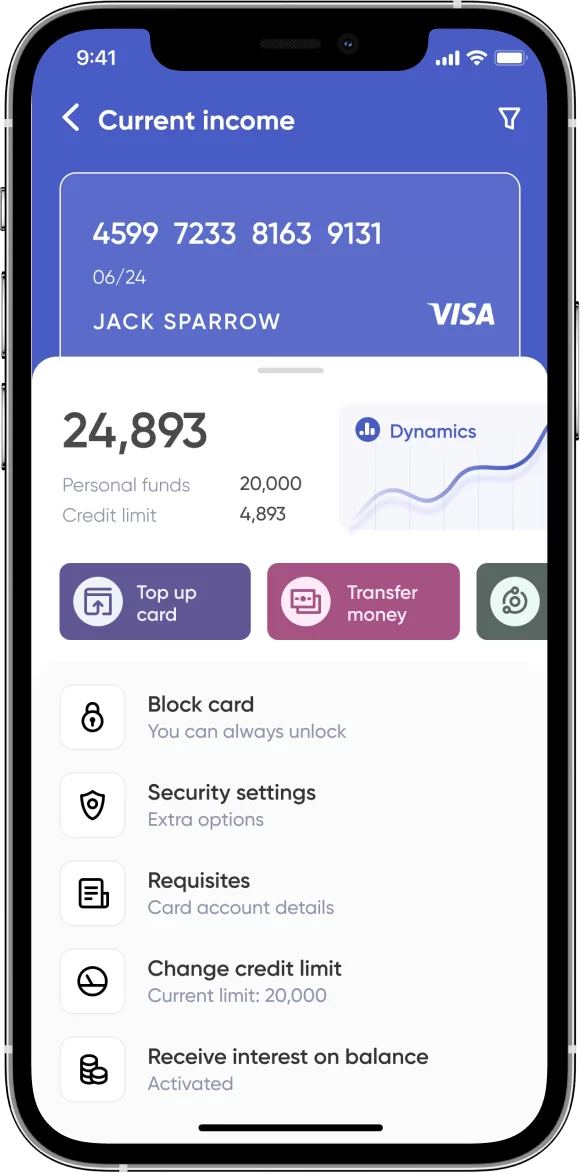
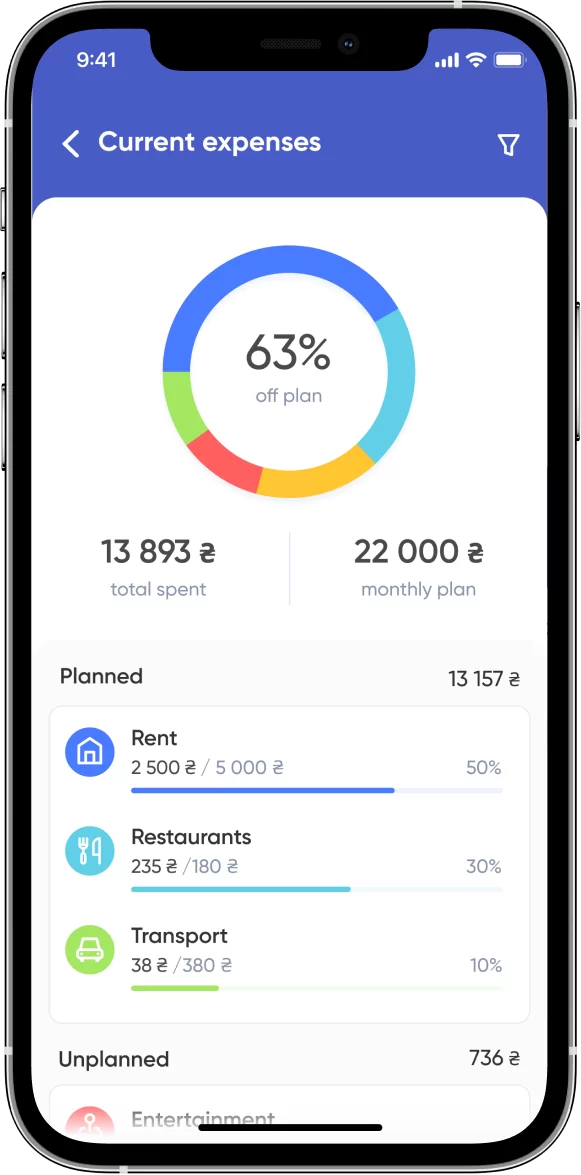
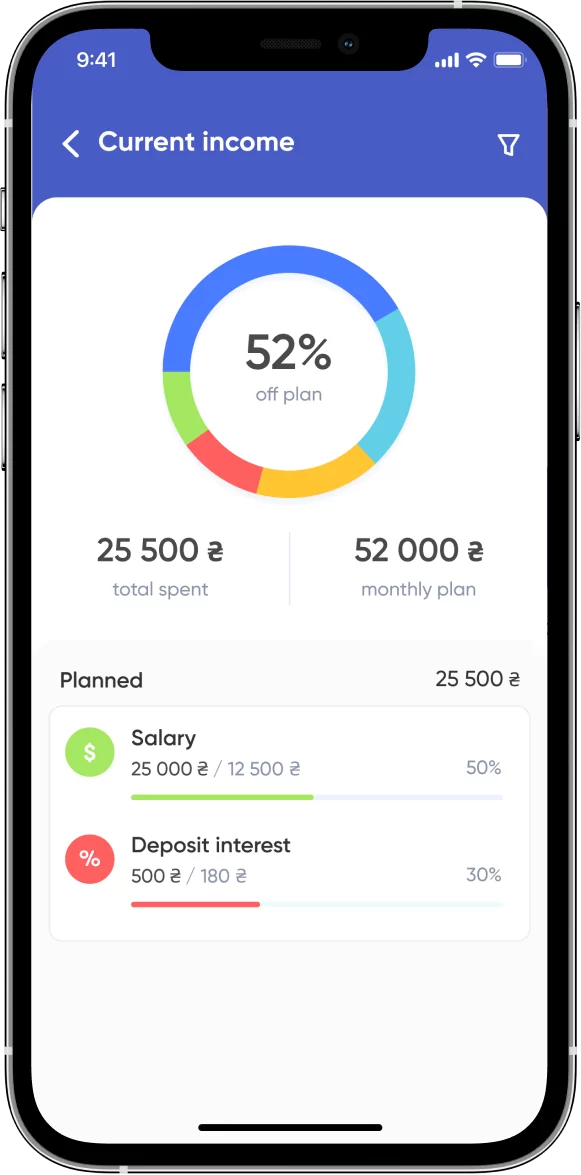
Budgeting
This page is for planning and estimation of the expenses. Users can always look at a target they want to achieve in a certain month or any other period of time.
Setting finance goals
Savings for studying, buying a new laptop or a tool for it, happens here Long-term or short-term goals, private, shared with a friend or family member — all features are available and flexible.
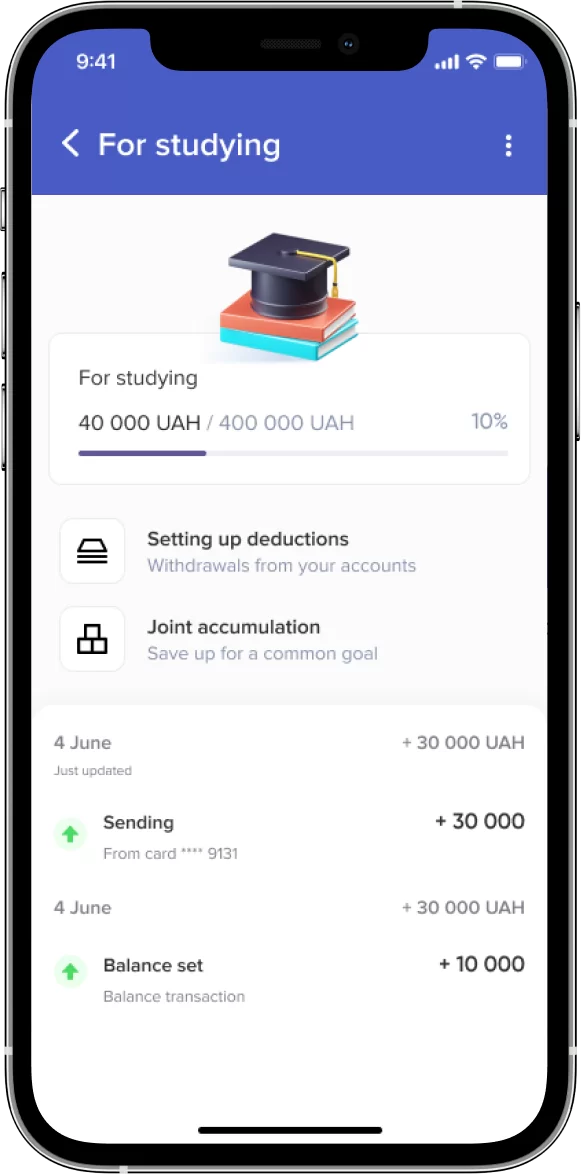
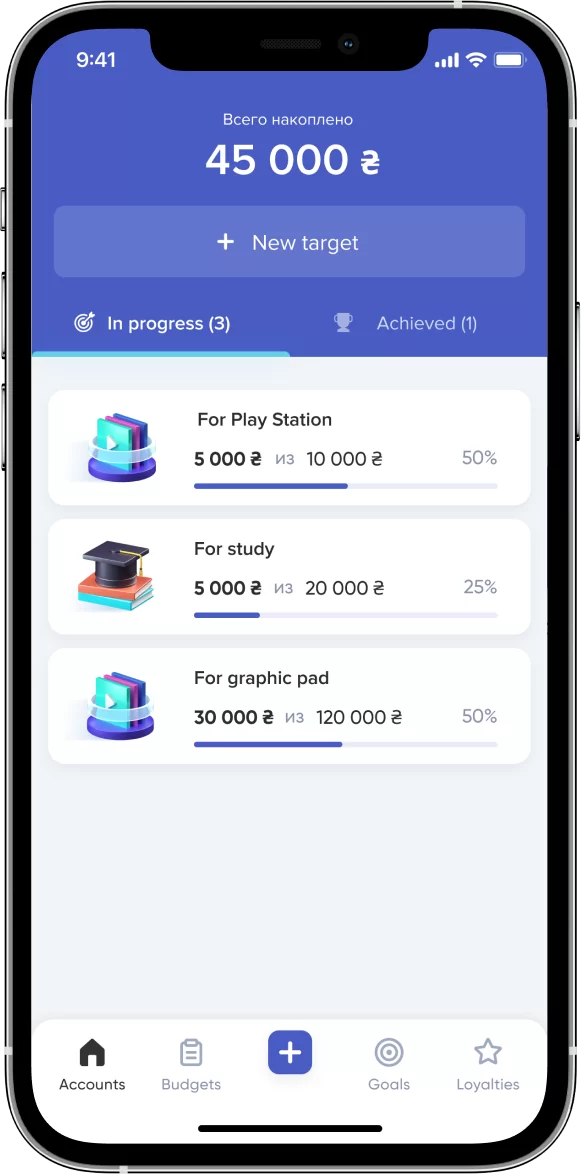
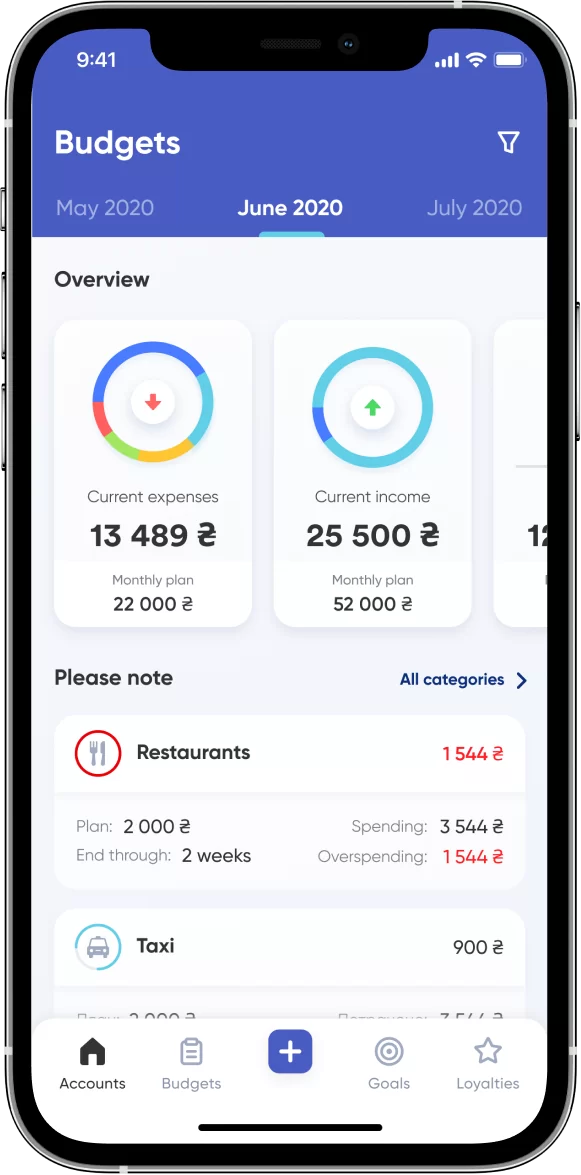
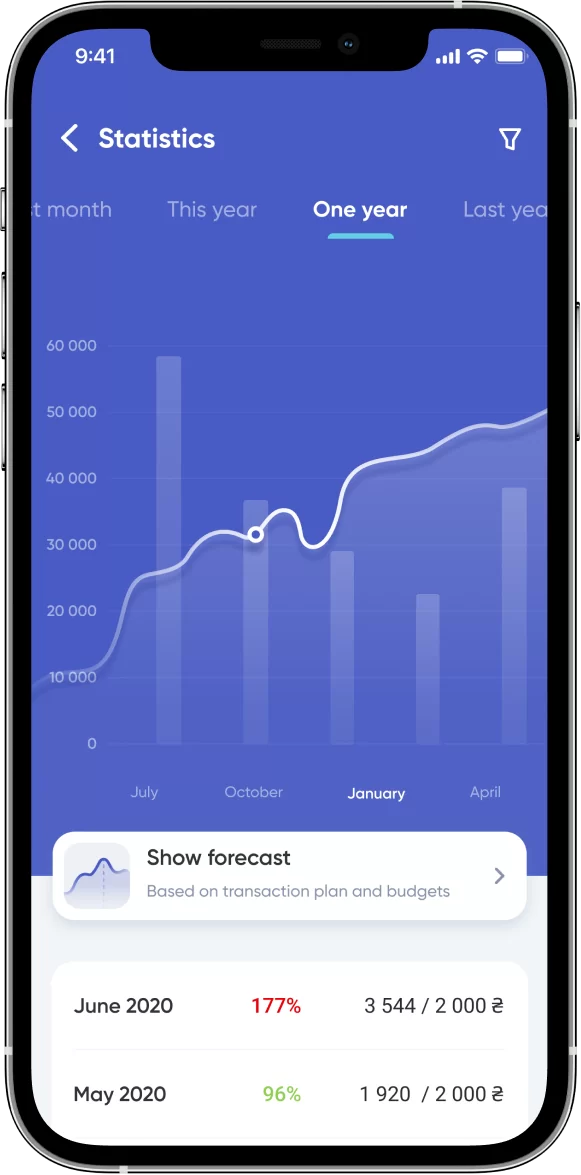
Analytics and forecasting
This particular feature of forecasting was developed after receiving a corresponding answer during interviews. Some of the respondents stated that they lack the option to see the forecast for the future. Now they have this chart, as well as spendings that are categorized into relevant groups.
Customer feedback


When we were looking for a partner for our product research task, experience in similar tasks was important for us, as well as experience in the field of financial technologies. Devlight fully met our requirements, and cooperation with them exceeded all our expectations.
The results of product research
Vodafone was pleased with the prototype and business model that we developed for their project. We found a way to land a massive telecommunications giant on a completely new market based on a tested and prototyped viable service.












